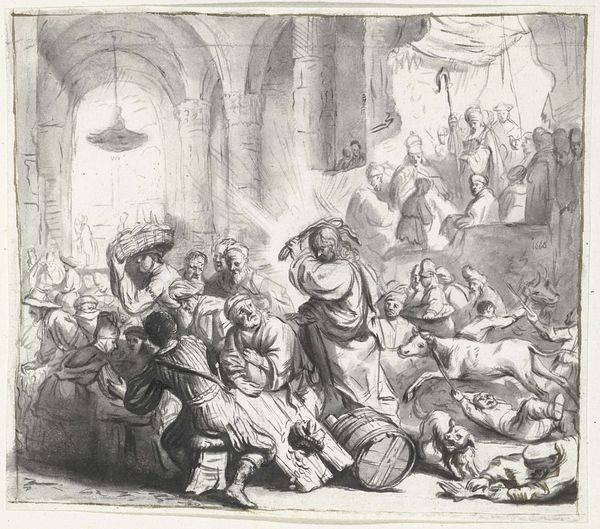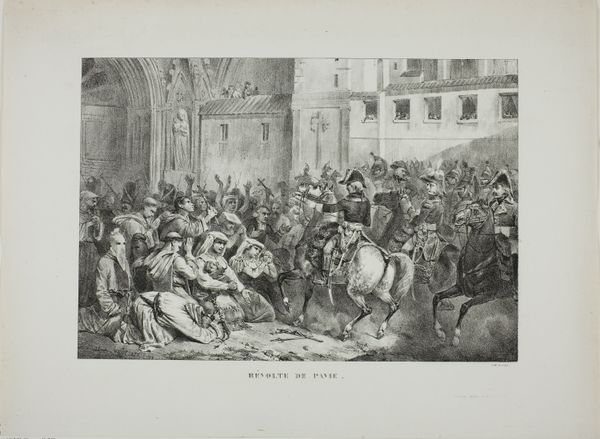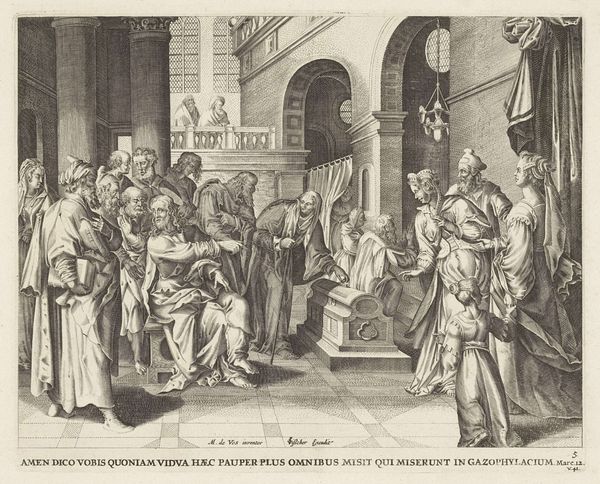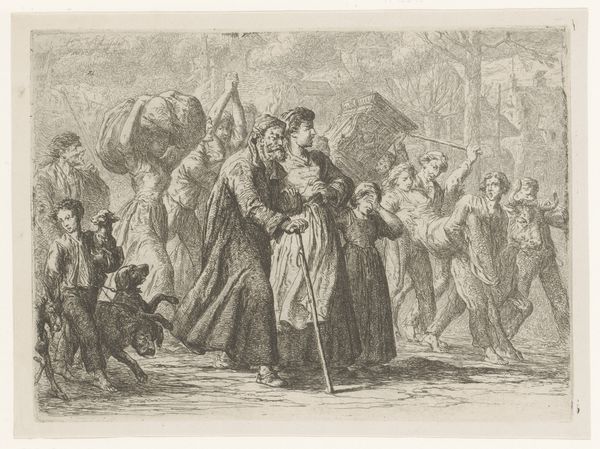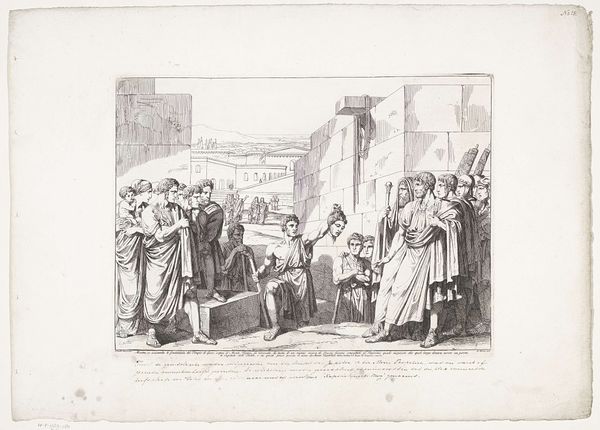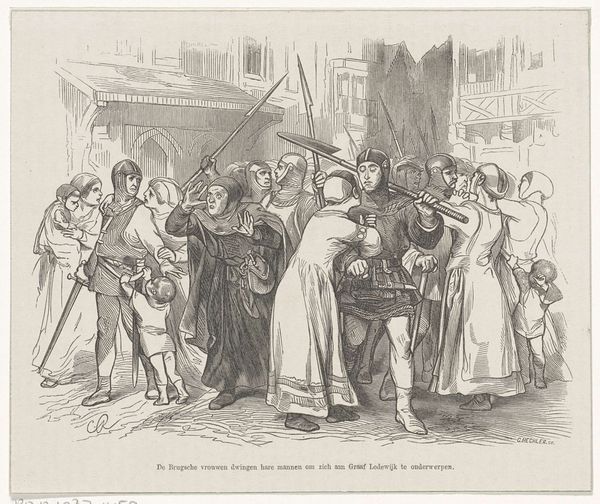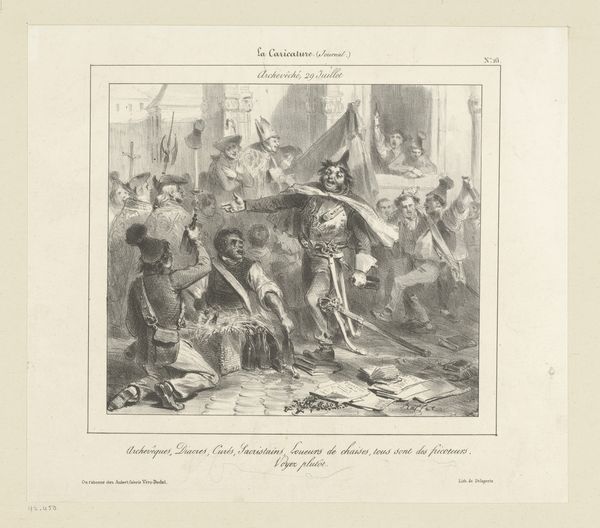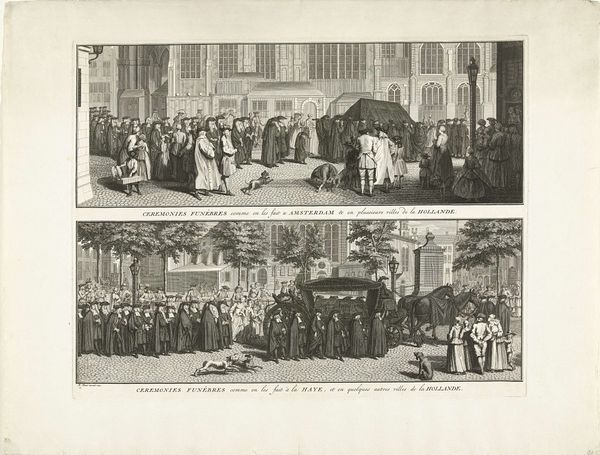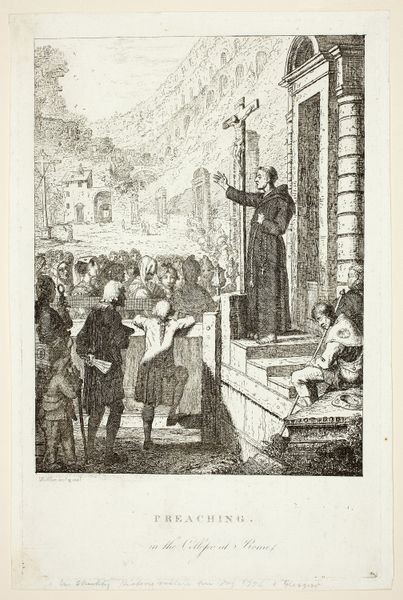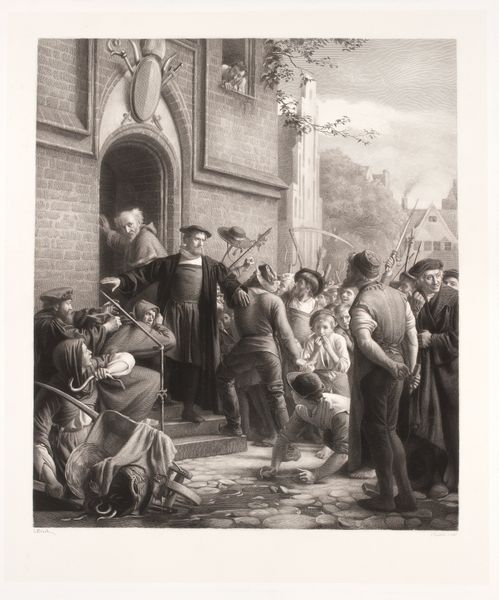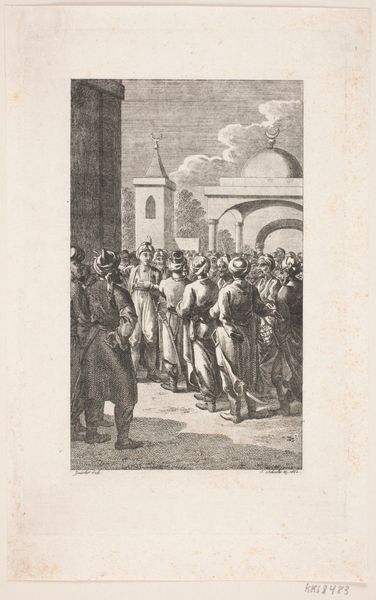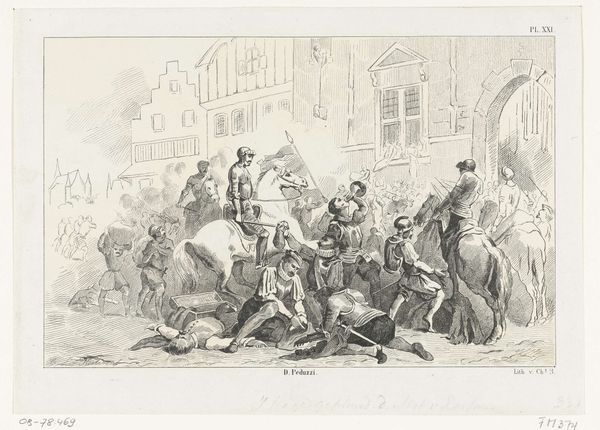
Dimensions: height 158 mm, width 240 mm
Copyright: Rijks Museum: Open Domain
Curator: Before us is "Amsterdam Chooses the States Side, 1578." Created between 1853 and 1861 by Christiaan Lodewijk van Kesteren, it’s rendered as a drawing, utilizing lithography and ink in a print form. Editor: What strikes me immediately is the controlled chaos – a crowded interior with a palpable sense of rising action. The raised weapons and banners create a clear image of unrest. Curator: Indeed. This lithograph captures a pivotal moment: Amsterdam's shift towards supporting the States Party, a watershed event that highlights burgeoning Dutch identity. The historical context reveals a power struggle, not just political, but a conflict embedded in questions of religious identity. We see echoes of broader resistance against imperial forces. Editor: Look at the symbolism! The raised axes are definitely potent imagery of a people claiming their power. The composition funnels the eye toward that central banner, suggesting unity and a shared cause. It's interesting that we see these images recur across history, demonstrating shared cultural needs for rebellion and identity-forming. Curator: Precisely! Consider who's missing from this representation. Where are the women, except perhaps as background observers? What about the perspectives of those loyal to the Spanish crown? These silences are just as telling. Understanding historical power dynamics is crucial here, where certain voices were actively repressed, demonstrating the selective nature of historical narratives. Editor: It certainly compels reflection on our current moment too. Seeing how symbols are appropriated and adapted for modern-day socio-political clashes-- it raises interesting questions about visual communication across time. The central banner, for instance—akin to flags and emblems still employed today to establish cultural identities. Curator: I agree. Recognizing the gaps and exclusions encourages us to investigate deeper. It enables critical re-evaluation about who dictates our accepted “truths”, which informs our contemporary moment and reminds us to seek diverse representations. Editor: Yes, absolutely. Images such as these carry an incredible legacy. A lot like these symbols and their emotional impact are ingrained within collective memory—continuing to exert an impact. Curator: In the end, Van Kesteren's print provokes dialogue, not just about the past, but about the very process of history-making and representation. Editor: It is, truly, a potent depiction with lasting resonance.
Comments
No comments
Be the first to comment and join the conversation on the ultimate creative platform.
